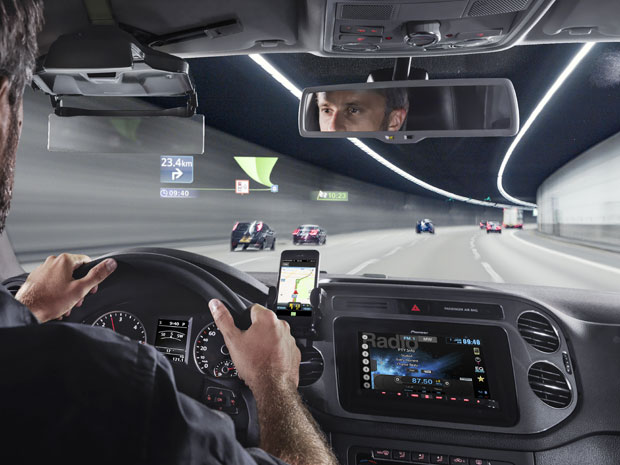
Formula One drivers have always needed physical stamina to endure crushing turns and long races. Now they’ll need to be good sprinters, too. That’s because in lieu of a tire-change pit stop, drivers of the new all-electric Formula E series will sprint from one car to another midrace—twice.
The car swap will allow pit crews to recharge the batteries. The relay-race aspect of Formula E harks back to the Pony Express, but the car itself, unveiled in September at the Frankfurt Motor Show, in Germany, looks ahead to the possible future of electric cars.
Continue reading Electrifying Formula One →
 A fleet of cars and drivers whisks visiting journalists around the Frankfurt Motor Show’s sprawling, 144-hectare site. Judging by the number of exhibits of self-driving car technology this year, future visitors can expect their courtesy cars to lack drivers. It’s a matter of putting together many existing technologies in an affordable, safe system.
A fleet of cars and drivers whisks visiting journalists around the Frankfurt Motor Show’s sprawling, 144-hectare site. Judging by the number of exhibits of self-driving car technology this year, future visitors can expect their courtesy cars to lack drivers. It’s a matter of putting together many existing technologies in an affordable, safe system.
One piece of that future system nearly clobbered a two-dimensional cutout of a child last week on a fenced-off piece of asphalt outside Hall 10. There, Bosch employees led by Werner Uhler were demonstrating a stereo optical camera system Uhler says could be cheaper than combined radar and optical systems used for collision avoidance today. The device is mounted on the front window of a testbed car, adjacent to the rear-view mirror. As the testbed approached a parked car, Uhler, seated in the backseat, said, “We will drive along…and suddenly a child will turn up and we will brake.”
Read the rest of this post at IEEE Spectrum’s Tech Talk blog: [html] [pdf]

 Heads Up Displays (HUDs), once the domain of fighter pilots and luxury car drivers, now come in a clip-on variety affordable to a much wider market. The systems project information on to a see-through screen to help keep their users’ attention outside the vehicle. But until now, such clarity of mind never came cheap: BMW charges over US $1000 for its built-in HUD system.
Heads Up Displays (HUDs), once the domain of fighter pilots and luxury car drivers, now come in a clip-on variety affordable to a much wider market. The systems project information on to a see-through screen to help keep their users’ attention outside the vehicle. But until now, such clarity of mind never came cheap: BMW charges over US $1000 for its built-in HUD system.
At this week’s Frankfurt Motor Show in Germany, several cheaper alternatives were on offer. Car accessory maker Pioneer showed off its NavGate HUD, which it will sell in Europe starting in October. The HUD uses Texas Instruments’ DLP projector instead of the more expensive laser found in a Japanese-market predecessor. That move shaves a few hundred dollars off its cost, but it still comes through at €699, or $927. Navigation system maker Garmin last month announced a dashboard-mounted HUD display for $150.
Unlike built-in HUDs systems, these after-market versions require drivers to provide a smartphone and to download separate applications (an additional $50 in Garmin’s case). But the ubiquity of smartphones is helping accessory makers to nip at the heels of car manufacturers in yet another product range. And for the DIYers, there’s always Lifehacker.
Read the rest of this blog post at IEEE Spectrum’s Tech Talk: [html] [pdf]
Journalist covering global development by way of science and technology.



